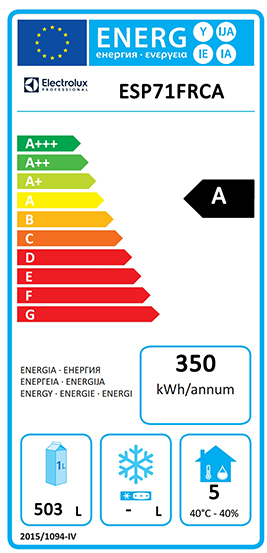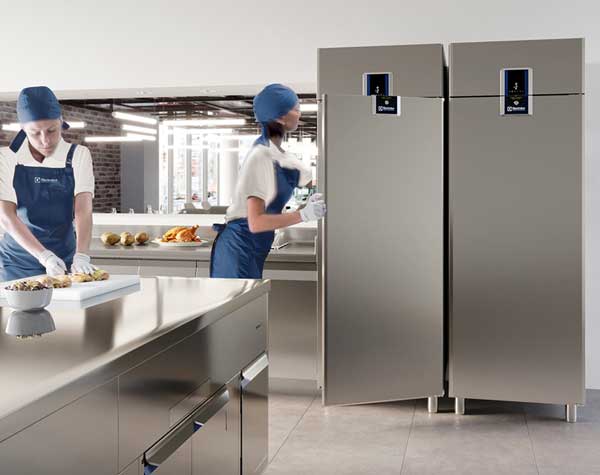-
Energy class
-
Annual energy consumption
-
Net storage capacity
-
Climate class
Energy Classes for Electrical Appliances
The energy class serves as the overarching indicator of an appliance’s energy efficiency. Under the EU energy label, commercial refrigeration units are rated from A+++ to G, based on their Minimum Energy Performance Standards (MEPS). A+++ denotes the most efficient, while G indicates the least.
In 2025, many businesses aim for appliances rated A+ or higher to align with corporate sustainability goals and reduce their carbon footprint.
Annual Energy Consumption (kWh/annum)
The EU energy label clearly states the unit’s expected annual energy consumption. This data helps operators calculate projected running costs by multiplying the kWh by the unit cost.
Modern appliances often feature smart defrost cycles or inverter compressors, further reducing energy consumption.
Storage Capacity
Another critical metric on the EU energy label is the maximum capacity—or net volume (L)—of the appliance. Overloading a commercial refrigerator can hinder airflow around stored produce, potentially causing it to spoil prematurely. Therefore, operators must ensure they invest in commercial refrigeration with sufficient capacity to store contents safely and efficiently.
Electrolux Professional’s ecostore refrigerated cabinets and freezers, for instance, offer an average of 50 liters more capacity than other models with a comparable footprint, thanks to their innovative design and the positioning of the refrigeration unit.

Climate Class
-
Climate Class 4 (‘light duty’: 30°C / 55% humidity)
-
Climate Class 5 (‘heavy duty’: 40°C / 40% humidity)

